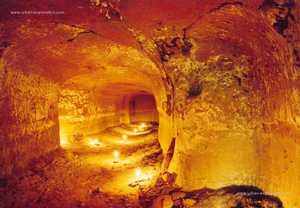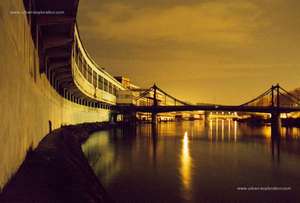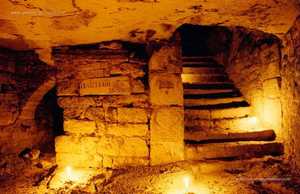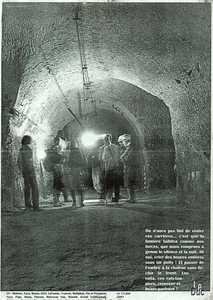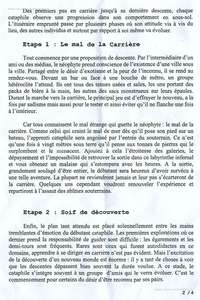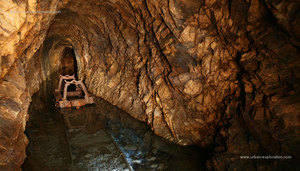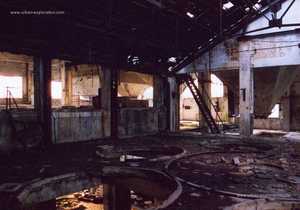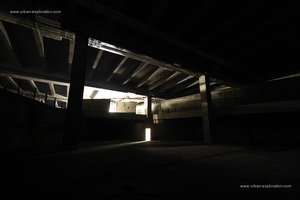page rank 50
Quarry of Roussillon. Located in the middle of Provence, ocher quarries of Roussillon have a unique landscape in France. They are called the Colorado Provencal. Ochre of Roussillon is 90% sand and 10% clay and pigments of goethite. Formerly used by humans 15,000 years ago, the ochres are still used in the art world.
page rank 50
keywords : WASTELAND ISLAND BILLANCOURT BOULOGNE MEUDON RENAULT SEGUIN SEINE BRIDGE REFLECTION
Write the first comment
Write the first comment
Louis Renault is a talented engineer. He invented the direct transmission gear box and patented it in 1898. With his invention, he made a fortune and began a series of land acquisitions at Boulogne. Louis Renault bought the Ile Seguin in the late 20s. First it was supposed to be a recreation area for workers, it will eventually build a new plant next to existing ones. In November 1929, the new plant is inaugurated. Work will continue a few more years.
The Seguin Island plant is fully autonomous and ultra modern. The power plant is designed to operate with multiple fuels (coal or oil).
All the production of vehicles is centralized, but the engines are still being built across the Seine. Robert Doisneau tooked pictures of the spinning of asbestos, foundry metallurgical, workshop tire manufacturing, ...
In 1936, the Renault plant is a symbol of working class struggle with its largest concentration of strikers in France. His reputation will not be denied until the plant closure.
During WWII, the plant is working with the Nazis. Louis Renault gone to jail. The plant was nationalized and in 1947 the 4cv is the success of the National Board of the Renault. 10,000 workers employed on the island. 40,000 workers employed on the site.
During the events of 1968, the island is a symbol of unionism. Workers get more social advances.
The last models produced by the plant are the Super 5 and the Express (a commercial vehicle based on the Super 5). On March 31, 1992, the range and stops the plant closes, now too small to produce new models.
Abandoned the island to be destroyed. The yard is huge and companies are fighting for the tender. The main thing is forgotten: The site must be cleared. The power plant is full of asbestos and the entire basement of the island is bathed by many chemicals. While the plant was emptied in a few months, the destruction tooked 13 years.
source: Legag.com(FR)
The Seguin Island plant is fully autonomous and ultra modern. The power plant is designed to operate with multiple fuels (coal or oil).
All the production of vehicles is centralized, but the engines are still being built across the Seine. Robert Doisneau tooked pictures of the spinning of asbestos, foundry metallurgical, workshop tire manufacturing, ...
In 1936, the Renault plant is a symbol of working class struggle with its largest concentration of strikers in France. His reputation will not be denied until the plant closure.
During WWII, the plant is working with the Nazis. Louis Renault gone to jail. The plant was nationalized and in 1947 the 4cv is the success of the National Board of the Renault. 10,000 workers employed on the island. 40,000 workers employed on the site.
During the events of 1968, the island is a symbol of unionism. Workers get more social advances.
The last models produced by the plant are the Super 5 and the Express (a commercial vehicle based on the Super 5). On March 31, 1992, the range and stops the plant closes, now too small to produce new models.
Abandoned the island to be destroyed. The yard is huge and companies are fighting for the tender. The main thing is forgotten: The site must be cleared. The power plant is full of asbestos and the entire basement of the island is bathed by many chemicals. While the plant was emptied in a few months, the destruction tooked 13 years.
source: Legag.com(FR)
page rank 50
The sky train, the train on air cushion. Bertin The company developed several prototypes of this type of train. The test tracks were built in 1965. The smallest to the Gometz Chatel and the largest near Orleans, over 20 kilometers long.
The concrete track is shaped like an inverted T. The world record speed for a vehicle air-cushion was established March 5, 1974. The record speed is 430 km / h. In June 1974, the company Bertin sign a contract for the construction of a high-speed line between the town of Cergy and business district "La Défense". A few months later, the French government reversed its decision and abandon the project.
The failure of the project has several assumptions:
- The oil crisis of 1973.
- Lobbying by the company National Railways (SNCF) and the metallurgic industry.
The engineer Jean Bertin died December 21, 1975. In 1978, the permanent cessation of testing. The prototypes are still 14 years in the hangar. Then the hangar is the victim of arson. The test track Gometz le Châtel no longer exists. It has been replaced by a tunnel bypass to relieve the downtown traffic jams.
Orleans-Saran line still dominates the fields of the campaign. That would be too expensive to demolish it, especially since it nobody.
source: Wikipedia
The concrete track is shaped like an inverted T. The world record speed for a vehicle air-cushion was established March 5, 1974. The record speed is 430 km / h. In June 1974, the company Bertin sign a contract for the construction of a high-speed line between the town of Cergy and business district "La Défense". A few months later, the French government reversed its decision and abandon the project.
The failure of the project has several assumptions:
- The oil crisis of 1973.
- Lobbying by the company National Railways (SNCF) and the metallurgic industry.
The engineer Jean Bertin died December 21, 1975. In 1978, the permanent cessation of testing. The prototypes are still 14 years in the hangar. Then the hangar is the victim of arson. The test track Gometz le Châtel no longer exists. It has been replaced by a tunnel bypass to relieve the downtown traffic jams.
Orleans-Saran line still dominates the fields of the campaign. That would be too expensive to demolish it, especially since it nobody.
source: Wikipedia
page rank 50
Quarries of Paris - The network located in the Val de Grace hospital.
The old quarries of the Val de Grace are medieval. They were exploited from the 13th century to 16th century.
In 1621, Anne of Austria asked Louis XIII transfer Benedictine nuns of the Convent of Bievre in Paris. The venue was the current location of the Val de Grace.
In 1638, the architect Francois Mansart began construction of a church and an abbey. In digging the foundations, he discovers that he is above old underground quarries. These voids are surveyed, mapped and consolidated. But Mansart spending too much money and who is the architect Lemercier completed the job.
For the purposes of work, workers have built a staircase to the underground quarries and give the name of Mansart.
The old quarries of the Val de Grace are medieval. They were exploited from the 13th century to 16th century.
In 1621, Anne of Austria asked Louis XIII transfer Benedictine nuns of the Convent of Bievre in Paris. The venue was the current location of the Val de Grace.
In 1638, the architect Francois Mansart began construction of a church and an abbey. In digging the foundations, he discovers that he is above old underground quarries. These voids are surveyed, mapped and consolidated. But Mansart spending too much money and who is the architect Lemercier completed the job.
For the purposes of work, workers have built a staircase to the underground quarries and give the name of Mansart.
page rank 50
We have not finished visiting these quarries ... The light will weak as our forces, we will break the silence on his knees and night. Ah yes, screaming for hours in a well! And to move from darkness to heat without bending the front. They are, these rats-moles, digger and well talkers!
LeDuc June 13, 2001
LeDuc June 13, 2001
page rank 50
First steps in quarry until his last run, each cataphile notes an improvement in his behavior in the undergrounds. The route passes through several phases where his attitude toward the place, other individuals and especially in relation to itself will evolve.
Step 1: The disease of quarries.
It starts with a proposed descent. Through a friend or media, the neophyte becomes aware of the existence of a city under the city. Torn between the desire for exoticism and fear of the unknown, he went to the rendez-vous. In front of a bar or in front a subway, a diverse group waiting for him. They have all worn and dirty uniforms, each carrying packs of beer in hand, the other monstrous sacks on their shoulders. During the walk to the quarry, the main game is to scare again, both by sadism but also to test it and avoid it falters once inside.
Because everyone knows the strange disease that threatens the neophyte: The disease of quarries. As one who fears seasick when he sets foot on a boat, the apprentice will distressed by the entrance of the cave. Only after twenty meters underground to think he tons of rocks that overlook and threaten. Add to that the narrowness of the galleries, the disorientation and the inability to find the exit in this hellish labyrinth and you get a malaise that will fade with the times. At the exit, greatly relieved to be whole, the beginner will be happy to have survived such an adventure. Most will never return and not deviate from the quarry. Some however will want to repeat the experience and come away with the attack of subterranean depths.
Step 2: Thirst discovery.
Finally, the long-awaited map is formally placed in the hands trembling with emotion of the beginners. The first explorations where the latter takes the responsibility for guiding difficult: The errors and half-turns are frequent. Few were self-taught in this area, learning to move in an underground quarry is not obvious. But the excitement of discovering a new world is huge: There are so many things to see that often runs beyond the required time. At this stage, the cataphile often integrates a group of friends who will evolve. This is the beginning for some the desire to be recognized by his peers.
Step 1: The disease of quarries.
It starts with a proposed descent. Through a friend or media, the neophyte becomes aware of the existence of a city under the city. Torn between the desire for exoticism and fear of the unknown, he went to the rendez-vous. In front of a bar or in front a subway, a diverse group waiting for him. They have all worn and dirty uniforms, each carrying packs of beer in hand, the other monstrous sacks on their shoulders. During the walk to the quarry, the main game is to scare again, both by sadism but also to test it and avoid it falters once inside.
Because everyone knows the strange disease that threatens the neophyte: The disease of quarries. As one who fears seasick when he sets foot on a boat, the apprentice will distressed by the entrance of the cave. Only after twenty meters underground to think he tons of rocks that overlook and threaten. Add to that the narrowness of the galleries, the disorientation and the inability to find the exit in this hellish labyrinth and you get a malaise that will fade with the times. At the exit, greatly relieved to be whole, the beginner will be happy to have survived such an adventure. Most will never return and not deviate from the quarry. Some however will want to repeat the experience and come away with the attack of subterranean depths.
Step 2: Thirst discovery.
Finally, the long-awaited map is formally placed in the hands trembling with emotion of the beginners. The first explorations where the latter takes the responsibility for guiding difficult: The errors and half-turns are frequent. Few were self-taught in this area, learning to move in an underground quarry is not obvious. But the excitement of discovering a new world is huge: There are so many things to see that often runs beyond the required time. At this stage, the cataphile often integrates a group of friends who will evolve. This is the beginning for some the desire to be recognized by his peers.
page rank 50
The Degond factory is one of the oldest factories of Longueville. She moved strategically close to the station after the track railway completed. It will employ up to 800 people in the village of Longueville and surrounding areas in manufacturing seamless tubes by stretching, before closing in 2003.
The decontamination and demolition of the site would cost more than 5 million euros. The company had already been convicted in the 1990s due to pollution of the river near the village: The Voulzie. Concentrations of hydrocarbons and chlorinated compounds detected in 2007 are still worrisome.
The decontamination and demolition of the site would cost more than 5 million euros. The company had already been convicted in the 1990s due to pollution of the river near the village: The Voulzie. Concentrations of hydrocarbons and chlorinated compounds detected in 2007 are still worrisome.
page rank 50
The origin of the silver-lead mines Trémusson is Roman. It was already long pieces of Roman origin in the galleries. An excavation site has confirmed the original site, by the discovery of tiles to hook on both sides of the creek.
In the late 17th century, the English are precursors in the mining of nonferrous metals. They buy logging concessions in Britain. However, the site is still not exploited Trémuson. The concession is then awarded on 1 April 1732 to a Breton of Morlaix Guillotou of Kerver. Speculation around the precious metal is growing, which does not prevent the owner from going bankrupt due to a bad investment.
In 1740 the Mining Company of Lower Britain bought the concession. It will take 40 years to industrialize the mines. In 1782, more than 500 people work at the mine site. The size of the concession is over 90,000 hectares. It will never be fully exploited. At the end of the 19th century, the exploitation fall. The owners regularly change without success.
It was not until 1922 that the operation resumes. A laundry room is built on a hillside in 1924. She can wash the ore and the sort because the deposit is less rich than in ancient times. A year later, a foundry was built. The operation is successful for ten years, then the company suffers Dufourg the general crisis. In 1931, the mine was permanently closed. It will never be exploited.
Today, the mines are protected refuges for bats but the many miles of tunnels continue to drain the lead in the village by water infiltration. The villagers can not eat vegetables from their gardens or drink water polluted groundwater. There are remains of the laundry and the foundry behind the village.
source: patrimoine.region-bretagne.fr(FR)
In the late 17th century, the English are precursors in the mining of nonferrous metals. They buy logging concessions in Britain. However, the site is still not exploited Trémuson. The concession is then awarded on 1 April 1732 to a Breton of Morlaix Guillotou of Kerver. Speculation around the precious metal is growing, which does not prevent the owner from going bankrupt due to a bad investment.
In 1740 the Mining Company of Lower Britain bought the concession. It will take 40 years to industrialize the mines. In 1782, more than 500 people work at the mine site. The size of the concession is over 90,000 hectares. It will never be fully exploited. At the end of the 19th century, the exploitation fall. The owners regularly change without success.
It was not until 1922 that the operation resumes. A laundry room is built on a hillside in 1924. She can wash the ore and the sort because the deposit is less rich than in ancient times. A year later, a foundry was built. The operation is successful for ten years, then the company suffers Dufourg the general crisis. In 1931, the mine was permanently closed. It will never be exploited.
Today, the mines are protected refuges for bats but the many miles of tunnels continue to drain the lead in the village by water infiltration. The villagers can not eat vegetables from their gardens or drink water polluted groundwater. There are remains of the laundry and the foundry behind the village.
source: patrimoine.region-bretagne.fr(FR)
page rank 50
Paper mills are based Landes November 8, 1927. At the time, the paper needs are important and France imports a lot of paper. The plant produces between 12 and 15 tons of paper. In 1934, the plant is in bankruptcy. Another company bought the paper industrial plant (pine cellulose). The mill changed its name to the company of stationers Roquefort.
At maximum activity, the factory employed 500 people in the manufacture of paper and kraft paper. In 1975, the company produces 125 tons of paper per day.
On June 28, 1978, the company ceases all activities and selling buildings. Other buildings are leased to small businesses. 20 years later, there were still huge abandoned buildings. Nobody made the decision to destroy them because it cost too much.
source: Website of Yves Roumazeilles(FR/EN)
At maximum activity, the factory employed 500 people in the manufacture of paper and kraft paper. In 1975, the company produces 125 tons of paper per day.
On June 28, 1978, the company ceases all activities and selling buildings. Other buildings are leased to small businesses. 20 years later, there were still huge abandoned buildings. Nobody made the decision to destroy them because it cost too much.
source: Website of Yves Roumazeilles(FR/EN)
page rank 50
One of the underground cathedrals of city's Defense, so called because the vacuum is very large. Before the attacks of September 11, 2001, the underground were opened in the Heritage Days. Since then, all visits are canceled
AQUATIC ARCH AXA BATTERY BIG BILLANCOURT BLOCK BOUGIVAL BOULOGNE BRIDGE BRITANNY BUILDING BUNKER BUTTRESS CASTLE CATACOMBS CATHEDRAL CB31 CENTER CHALK CHARTRES CHURCH CIMENTERIE CLINIC CONFLANS CORRIDOR COUTANCES CRANE CRUDE DEFENSE DENFERT DOME DOOR DRAWING ESSERENT ETIENNE FACTORY FACULTY FLYER FLYING FORT FRANCE FRONT GALLERY GLASSROOF GRS GYPSUM HERBLAY HONORINE HOUSE INDUSTRIAL ISLAND JAGUAR LADER LADY LEU LIMESTONE LYON MAGINOT MAHON MAP MARLY MEDICAL MEDIEVAL MERY MEUDON MILITARY MINE MINISTRY MONTALETS MONTESSON MONTROUGE MONUMENT MUSEUM MUSHROOM OCHRE OFFICIAL OISE OPERA ORANGIS ORSAY OSSUARY OUR PALACE PALAISEAU PANORAMICAL PAPERMAKING PARIS PAUL PENITENTIARY PILLAR POINT POND PONTOISE PORT PROVENCE QUARRY RAIL RAILING RENAULT RIS ROCHEREAU ROOFTOPS ROOM ROUDOUDOU SAINT SCHOOL SEGUIN SEINE SITE SOUTH STAIRS STATION STATUE STORE SWIMMING TECHNICAL THEATER TOWER TRIEL TROCADERO TUNNEL ULIS UNDERGROUND UNIVERSITY VARIOUS VAUX WAGON WALL WASTELAND WATER WELL

